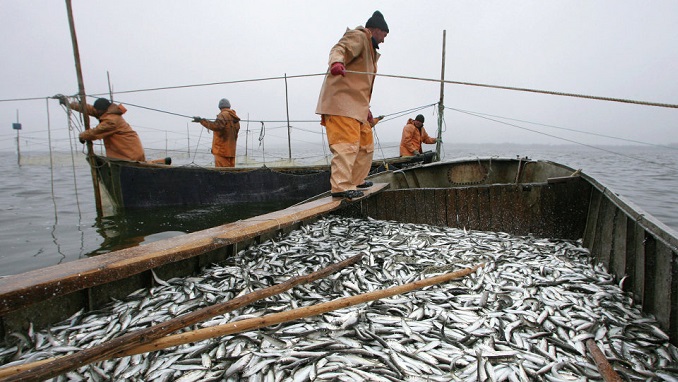The Russian Fishery Agency has announced that this will be the second consecutive year Russian catch totals reach an all-time high – in 2018, Russian fishing companies are expected to have landed more than five million metric tons (MT) of fish, up from 4.9 million MT in 2017.
But despite record catches by Russian fishing companies, the country’s per capita consumption of seafood has been decreasing, Seafood Source reports.
The price of fish has risen steadily, and the country’s economy has dipped as it faces international sanctions. According to the report, Russian seafood consumption was further hurt by a generational shift in food preferences, as well as transportation issues that are making it difficult to bring fresh fish to market.
The Federal Agency for Fisheries is establishing a non-profit organization – also named “The Russian Fish” – to coordinate the campaign, according to the agency’s director, Ilya Shestakov. The organization’s functions will include market analysis and establishing industry standards for the catching, storage, transportation, merchandizing, and selling of fish in Russia and abroad. Initially, The Russian Fish will concentrate on four sectors: White fish, salmon, pelagic species, and shellfish, according to Shestakov.
“The industry needs to develop standards for each part of the supply chain to deliver seafood to consumers as quickly – and therefore as fresh – as possible,” Shestakov said.
In order to streamline this effort, Shestakov said he would like to see a decrease in the number of intermediaries in the supply chain. But there are some obstacles in achieving that objective, according to Russian Federal Agency for Fisheries Deputy Head Pyotr Savchuk. Most of Russia’s fish is caught in the Russian Far East, while much of its population is in the European part of Russia, thousands of kilometers away.
“The logistics of bringing fish from one end of the country to the other currently requires the involvement of many parties, from fishing companies to wholesalers, transport companies to retailers. Furthermore, existing rules and guidelines on transportation, packaging, and merchandising are often not obeyed,” Savchuk said.
The initiative comes at a time when poor diet habits are being blamed for most deaths in Russia. This week, the country’s consumer watchdog, Rospotrebnadzor said some 63 percent of deaths in Russia are caused by illnesses related to poor diet. The agency promoted its own campaign of voluntary ‘traffic lights’ food markings.
The marking system is designed to help people tell unhealthy products from healthy ones. The markings – green, yellow and red – show how much fat, saturated fats, sugar and salt a product contains, making it easier for consumers to choose their rations wisely.












